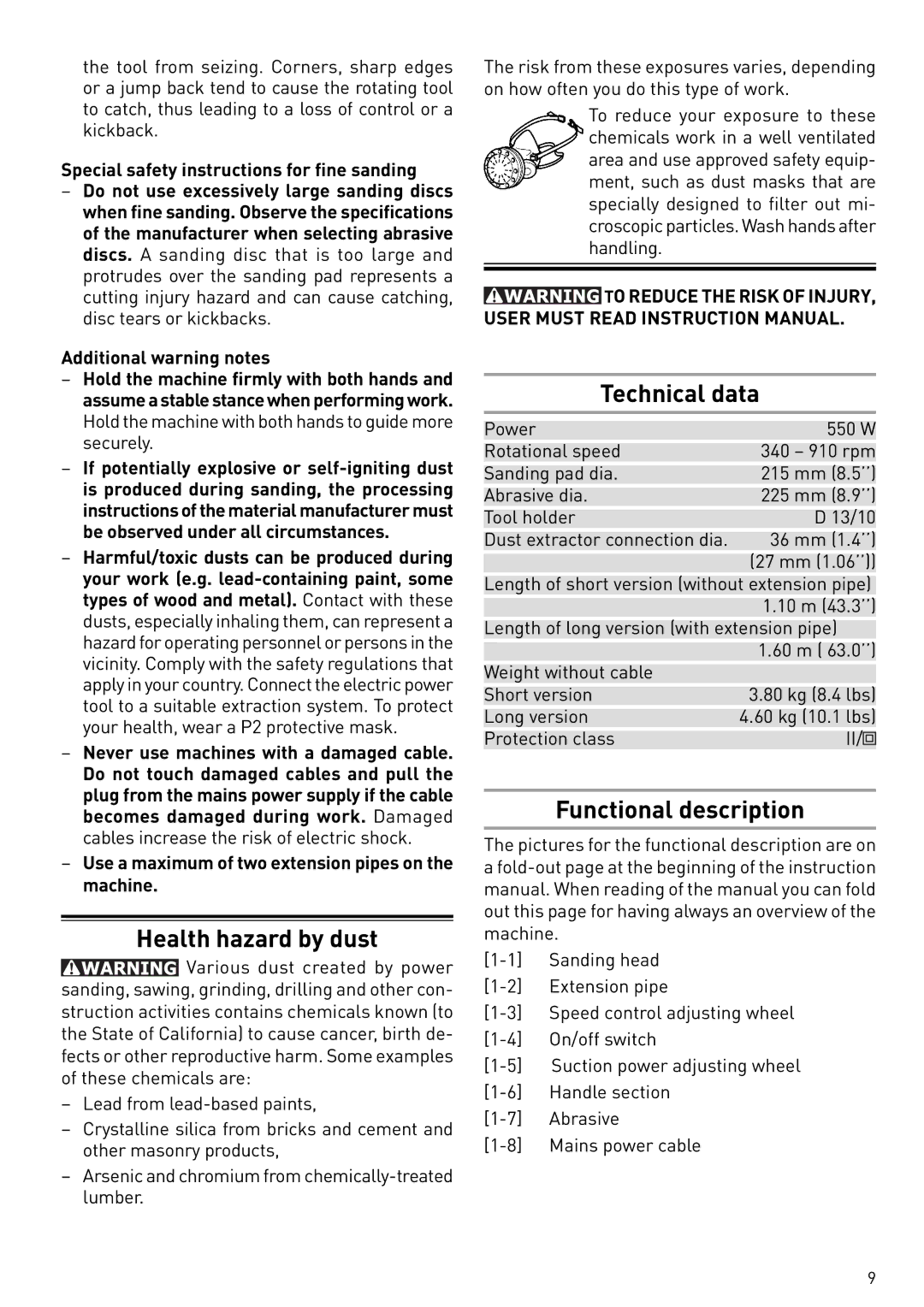
the tool from seizing. Corners, sharp edges or a jump back tend to cause the rotating tool to catch, thus leading to a loss of control or a kickback.
Special safety instructions for fine sanding
–Do not use excessively large sanding discs when fine sanding. Observe the specifications of the manufacturer when selecting abrasive discs. A sanding disc that is too large and protrudes over the sanding pad represents a cutting injury hazard and can cause catching, disc tears or kickbacks.
Additional warning notes
–Hold the machine firmly with both hands and assume a stable stance when performing work. Hold the machine with both hands to guide more securely.
–If potentially explosive or
–Harmful/toxic dusts can be produced during your work (e.g.
–Never use machines with a damaged cable. Do not touch damaged cables and pull the plug from the mains power supply if the cable becomes damaged during work. Damaged cables increase the risk of electric shock.
–Use a maximum of two extension pipes on the machine.
Health hazard by dust
![]() Various dust created by power sanding, sawing, grinding, drilling and other con- struction activities contains chemicals known (to the State of California) to cause cancer, birth de- fects or other reproductive harm. Some examples of these chemicals are:
Various dust created by power sanding, sawing, grinding, drilling and other con- struction activities contains chemicals known (to the State of California) to cause cancer, birth de- fects or other reproductive harm. Some examples of these chemicals are:
–Lead from
–Crystalline silica from bricks and cement and other masonry products,
–Arsenic and chromium from
The risk from these exposures varies, depending on how often you do this type of work.
To reduce your exposure to these chemicals work in a well ventilated area and use approved safety equip- ment, such as dust masks that are specially designed to filter out mi- croscopic particles. Wash hands after handling.
![]()
![]()
![]()
![]() TO REDUCE THE RISK OF INJURY, USER MUST READ INSTRUCTION MANUAL.
TO REDUCE THE RISK OF INJURY, USER MUST READ INSTRUCTION MANUAL.
Technical data
Power | 550 W |
Rotational speed | 340 – 910 rpm |
Sanding pad dia. | 215 mm (8.5’’) |
Abrasive dia. | 225 mm (8.9’’) |
Tool holder | D 13/10 |
Dust extractor connection dia. | 36 mm (1.4’’) |
| (27 mm (1.06’’)) |
Length of short version (without extension pipe)
| 1.10 m (43.3’’) |
Length of long version (with extension pipe) | |
Weight without cable | 1.60 m ( 63.0’’) |
| |
Short version | 3.80 kg (8.4 lbs) |
Long version | 4.60 kg (10.1 lbs) |
Protection class | II/ |
Functional description
The pictures for the functional description are on a
9
